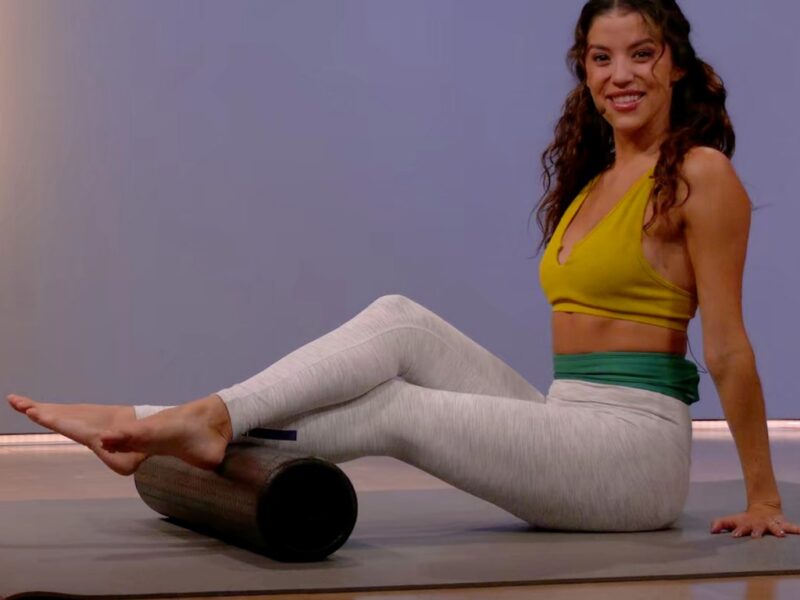If you want to stay active and pain-free as the years go by, the way you treat your joints and muscles each day makes all the difference.
It’s not only athletes who should think about injury prevention. Everyday routines, desk jobs, and even small lifestyle choices can put unnecessary strain on your body.
The good news is that small, intentional habits can keep your joints strong, your muscles flexible, and your movements efficient.
Why Daily Habits Shape Long-Term Joint and Muscle Health

Your body adapts to what you do most often. If you sit in a chair for hours with poor posture, the result is stiff hips, a sore back, and weaker stabilizing muscles.
If you move regularly, hydrate properly, and give your body adequate rest, you’ll notice smoother movement and fewer aches.
The impact of habits accumulates, which means protecting your joints and muscles isn’t about dramatic changes but about consistency.
This is especially important because many chronic issues – like arthritis flare-ups or muscle imbalances – develop gradually.
Paying attention to the small details now is the best insurance against bigger problems later.
Posture and Ergonomics: The Everyday Foundation
One of the simplest ways to protect your body is to focus on posture. Slouching at a desk or leaning awkwardly while working can strain both muscles and joints.
Over time, this contributes to tightness in the neck and shoulders, rounded upper back, and pressure in the lower spine.
If you work long hours at a computer, ergonomic adjustments make a world of difference.
A supportive chair, proper monitor height, and tools designed to reduce wrist strain help reduce cumulative stress.
For instance, many people find that using a 3d mouse pad with wrist support not only improves comfort but also prevents repetitive stress injuries that often show up in the hands and forearms.
These small tools might seem trivial, but they can preserve your joints over years of daily use.
Movement as Medicine

The human body is designed to move. Joints are nourished by synovial fluid, which circulates better when you’re active.
Muscles respond to load by strengthening, while connective tissue like tendons and ligaments stay resilient with regular use.
To protect your joints and muscles, think of daily movement as medicine:
- Stretching: Focus on dynamic stretches before activity and gentle static stretches afterward.
- Strength Training: Building muscle reduces strain on joints, acting like protective armor.
- Low-Impact Cardio: Walking, swimming, or cycling increase blood flow without pounding on your knees and hips.
- Variety: Mixing up your activities prevents overuse and balances out weaker muscle groups.
Even short breaks of five minutes every hour to stand, stretch, or walk can undo much of the stiffness that comes from prolonged sitting.
The Role of Nutrition and Hydration
Strong muscles and resilient joints aren’t only the result of exercise. Nutrition plays a critical role.
Protein is essential for muscle repair, while omega-3 fatty acids help reduce inflammation in the joints. Minerals like calcium and magnesium support bone strength and muscle function.
Hydration is another underestimated factor. Cartilage – the cushion between your joints – depends on water to stay elastic.
When you’re dehydrated, joints become more vulnerable to wear. Aiming for steady water intake throughout the day is a simple but powerful way to support your musculoskeletal system.
Sleep and Recovery: The Missing Piece
Many people train hard, eat well, and still struggle with aches because they overlook recovery. Sleep is when your body repairs damaged muscle fibers and releases growth hormone.
Without at least seven hours of quality sleep, the repair process is compromised, leading to stiffness and increased risk of injury.
Recovery also includes strategies like foam rolling, massage, and active recovery days with light activity. These methods help maintain circulation and reduce tension, preventing chronic pain from taking root.
Building Smarter Work and Home Routines

The way you organize your day influences how your joints and muscles feel. Consider these adjustments:
- At Work: Alternate between sitting and standing if possible. Use footrests or lumbar cushions to reduce spinal stress.
- At Home: Avoid carrying heavy grocery bags on one side. Distribute weight evenly when lifting or moving items.
- During Leisure: Replace prolonged screen time with a short walk or stretching session to keep circulation flowing.
These small shifts often prevent the slow build-up of discomfort that later turns into chronic problems.
Listening to Warning Signs
Pain is your body’s way of signaling that something isn’t right. Sharp joint pain, swelling, or persistent muscle tightness should not be ignored.
Early intervention – whether adjusting form during exercise, changing your chair setup, or consulting a medical professional – can prevent minor issues from escalating.
Think of it as maintenance. Just as you wouldn’t ignore a warning light in your car, don’t dismiss recurring aches or pains.
The sooner you address them, the easier they are to resolve.
Practical Everyday Tips
To bring all of these ideas together, here are some practical steps you can start applying immediately:
- Warm up your body before exercise to prepare muscles and joints.
- Use proper footwear that supports your arches and reduces shock.
- Keep a reusable water bottle at your desk to remind yourself to hydrate.
- Add joint-friendly foods like salmon, leafy greens, and nuts to your meals.
- Take breaks from repetitive tasks to stretch or change positions.
- Prioritize seven to nine hours of sleep for optimal recovery.
While each habit might seem minor, they work together to create a strong foundation for long-term mobility and comfort.
Small Choices, Big Impact
Protecting your joints and muscles isn’t about chasing perfection but about making smarter daily choices.
By improving posture, moving regularly, fueling your body well, and paying attention to recovery, you’ll give yourself the best chance to stay active and pain-free for years to come.
These are habits you can build into your lifestyle without major disruption.
In fact, the simplest shifts – like adjusting your workspace, hydrating more, or prioritizing sleep – tend to deliver the biggest payoffs.
Over time, these choices add up to stronger, more resilient joints and muscles, helping you live with less pain and more freedom of movement.

